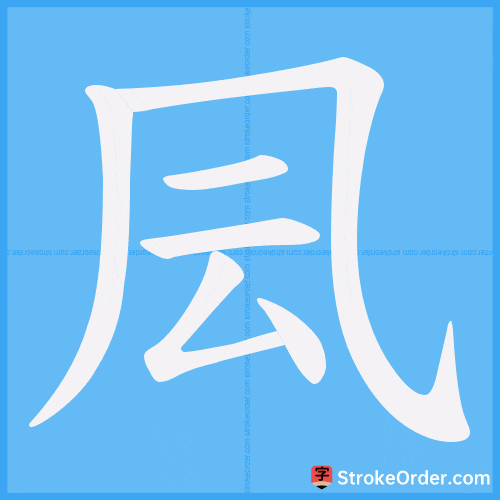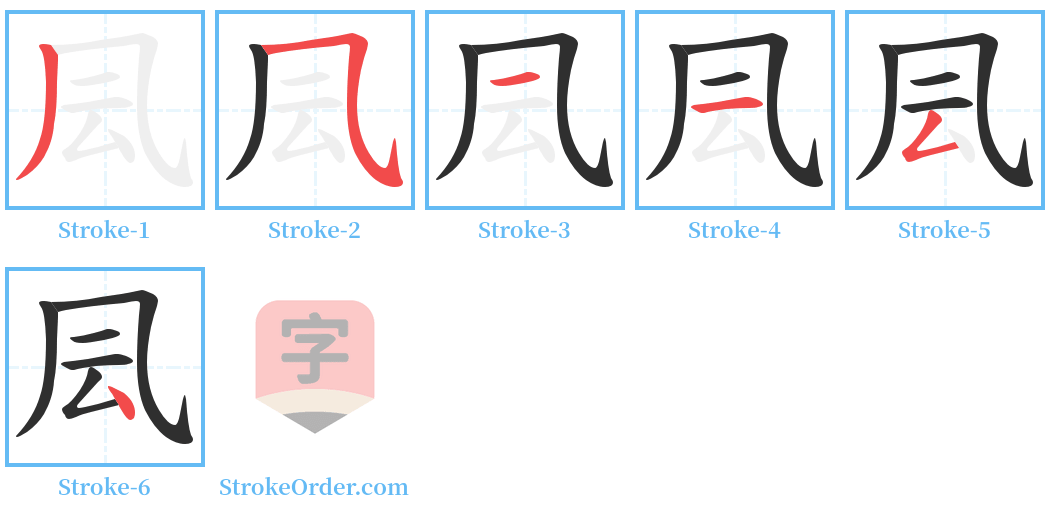凨 Stroke Order
Animated Stroke Order of 凨

Stroke Order Diagrams for 凨

Information of 凨
Pinyin
fēng
Radical
几
Strokes
6 strokes
Usage
★★
Definition
凨
1. Literally the same as "风" (wind) in ancient texts.
2. Noun: (Phonetic-ideographic character. From "虫" (insect), with "凡" (common) sound. The character relates to the notion that "the wind stirs and gives rise to insects"). Its primary meaning is a natural phenomenon of air movement, especially the natural movement of air parallel to the Earth's surface.
Associated meanings include "wind" and "eight winds". The directions include:
- East: Bright common wind
- Southeast: Clear and bright wind
- South: Scenic wind
- Southwest: Cool wind
- West: Wind of the door and gate
- Northwest: Wind of the non-around
- North: Vast wind
- Northeast: Melting wind
"The movement of wind causes insects to emerge, thus the insects undergo transformation in eight days." — "Shuowen"
"The wind of the beginning of spring." — "Yijing, Tongguayanzheng"
"East-northeast includes wind." — "Guangya, Shitian"
"Forty-five days from the winter solstice, the wind arrives." — "Huainanzi, Tianwen"
"The wind North-East breathes out, it governs the emergence of all things." This relates to the orderly governance and emergence of all things. — "Records of the Grand Historian, Treatise on Music"
"Isn’t it windy today?" — "Inscriptions from the Yin Dynasty"
"Seeing the wind rise, there is nothing to evade." — "Book of Han, Biographies of Zhao, Yin, Han, and Zhang"
"A great wind rises, and clouds fly high." — Liu Bang "Great Wind Song"
"The mountain rain is about to fall, and the wind fills the building." — Xu Huan "East Tower of Xianyang City"